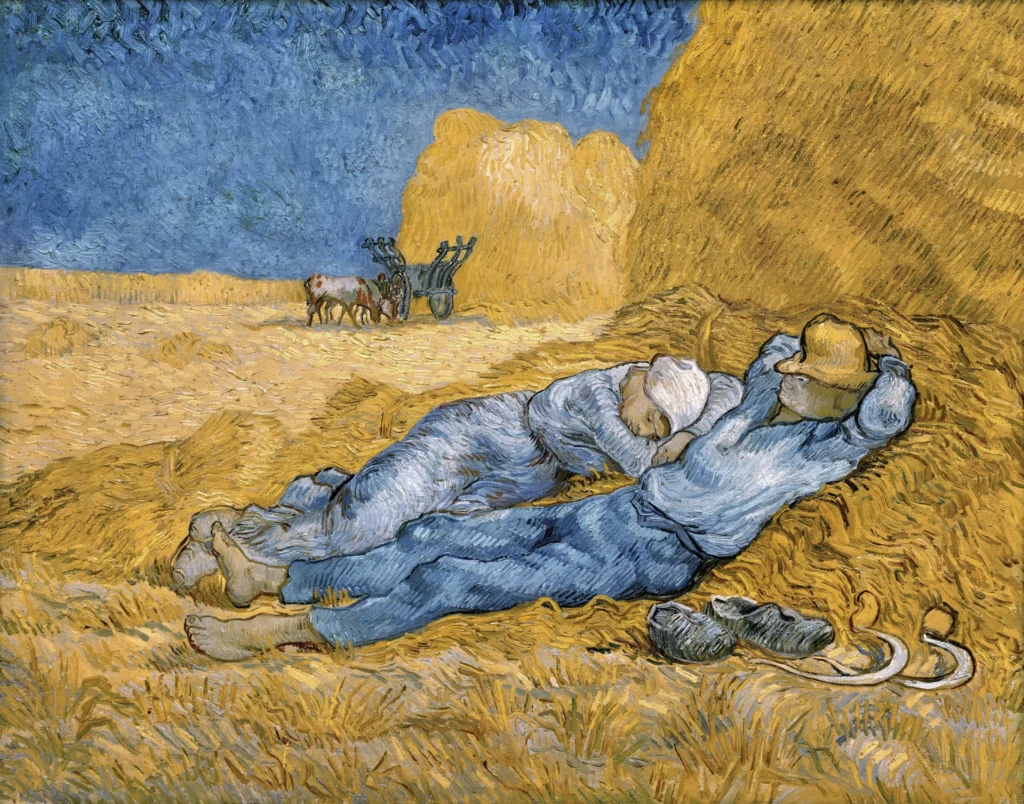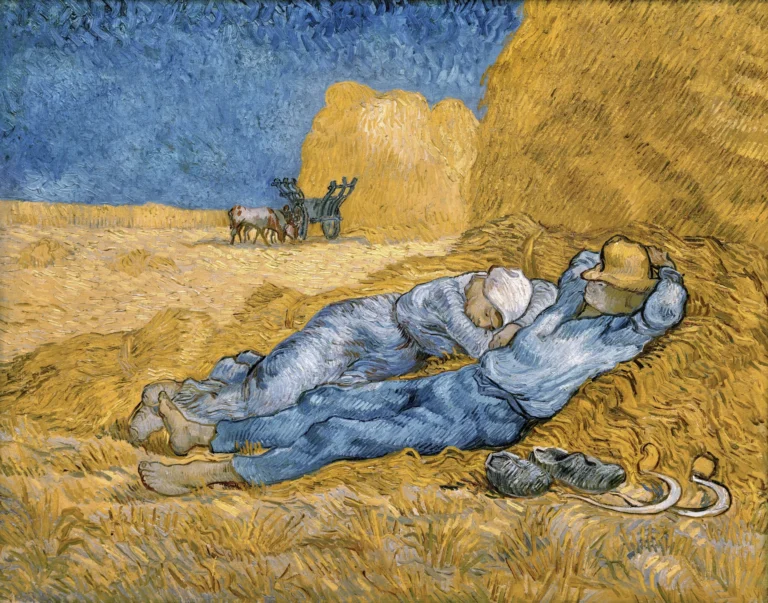The Siesta (1889-1890)
Created between December 1889 and January 1890, Vincent van Gogh's The Siesta is a stunning oil on canvas that showcases his unique stylistic evolution during a challenging period in his life. While interned in a mental asylum, Van Gogh drew inspiration from Jean-François Millet, yet he applied his vibrant palette and emotional depth to reimagine a tranquil rural scene. The painting, measuring 73 cm by 91 cm, is housed in the Musée d'Orsay, representing a fusion of inspiration and originality that marks it as a highlight in Van Gogh's oeuvre.
December 1889 - January 1890
About the Artwork
Did You Know
Liked what you see? Add it to your collection.
Enjoyed reading? Share it.
... continued
The Siesta (also known as La méridienne or La sieste)
is an oil on canvas painting created by Vincent van Gogh between December 1889 and January 1890. Here are some key points about the artwork:
Creation and Context
Van Gogh painted The Siesta while he was interned in a mental asylum in Saint-Rémy de Provence, France. This period was marked by significant artistic productivity despite his mental health struggles.
Inspiration
The composition of the painting is inspired by a drawing by Jean-François Millet, specifically from his series Four Moments in the Day. Van Gogh often copied Millet's works, admiring him as a modern painter. Despite the original inspiration, Van Gogh imposed his own unique style on the scene.
Style and Technique
The painting is characterized by Van Gogh's distinctive use of color, particularly a chromatic construction based on contrasting complementary colors such as blue-violet and yellow-orange. This technique translates the impressions of light and dark into a vibrant and intense visual language.
Dimensions and Location
The painting measures 73 cm by 91 cm and is part of the permanent collection at the Musée d'Orsay in Paris, although it is not currently on display.
Significance
Despite the peaceful nature of the subject, which symbolized rural France in the 1860s for Millet, Van Gogh's version radiates his unique artistic intensity. The Siesta is considered one of Van Gogh's masterpieces and reflects his ability to transform existing compositions into works that are distinctly his own.










